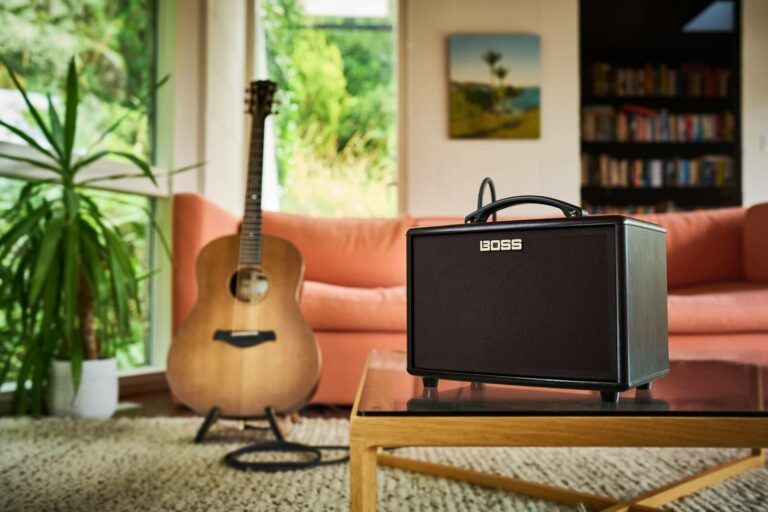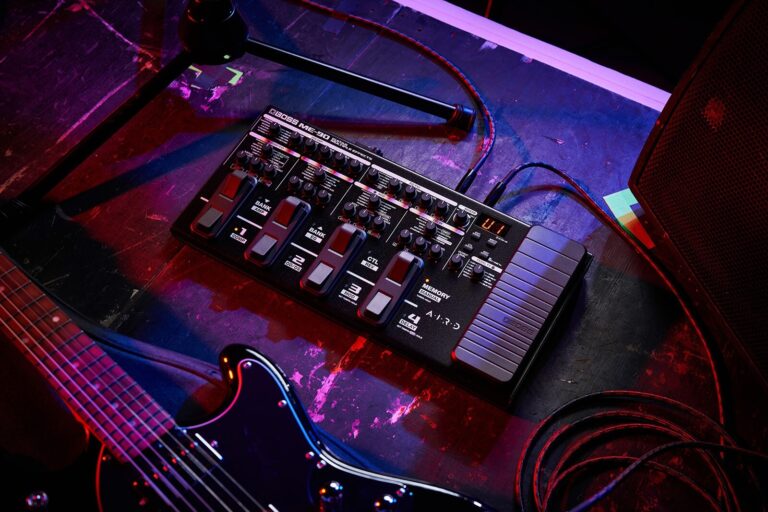BOSS: 40 Years of Shaping the Sound of Music
In the world of music, few companies have left as indelible a mark as BOSS. For the past four decades, this innovative brand has been at the forefront of effect pedal technology, crafting the tools that have helped shape the sound of countless genres and inspire generations of musicians. From humble beginnings to becoming an industry titan, BOSS’s journey is a testament to the power of innovation, dedication, and an unwavering commitment to helping musicians find their unique voice.
The Early Days: Setting the Stage
Before BOSS became a household name, its parent company, Roland, was already making waves in the music industry. In the early 1970s, Roland produced a handful of pedal-based effects, such as the AS-1 Sustainer, AF-100 Bee Baa, and AP-7 Jet Phaser. These early offerings coincided with a growing acceptance of pedal effects among guitarists, setting the stage for what was to come.
In 1973, Roland established the Music Engineering Group, or MEG Electronics Corporation, with the goal of focusing on the development of pedal effects and other products for the guitar market. However, shortly before the release of their first product, the B-100 contact pickup and preamp combo, the decision was made to change the brand name to BOSS, as it conveyed a stronger, more appealing image to guitarists.
The B-100 made its debut in 1974, albeit in limited numbers for the American market. It came in a unique wooden box with a clear plastic lid featuring the now-iconic BOSS logo. While the product itself did not bear the logo, this marked the beginning of a brand that would soon become synonymous with quality and innovation in the world of effect pedals.
Technological Breakthroughs and Defining Features
Throughout its history, BOSS has been responsible for numerous technological breakthroughs that have set the brand apart from the competition. The aforementioned FET switching, which provided silent operation and buffering capabilities, was one such innovation. Another was the asymmetrical clipping patent on the original OD-1 Overdrive, which emulated the sound of overdriven tubes by bringing out even harmonics. This distinctive, analog-sounding trait remained unique to BOSS for many years and continues to be a key element in several of their pedals today.
BOSS also introduced the world’s first compact digital delay pedal, the DD-2, and the first compact reverb pedal, the RV-2. These groundbreaking products made studio-quality effects accessible to a wider range of players, forever changing the landscape of guitar effects.
As digital technology evolved, BOSS adapted and innovated, introducing Multi-Dimensional Processing (MDP) in pedals like the OD-1X Overdrive and CP-1X Compressor. This technology analyzes the input tone and dynamically delivers the optimal output, depending on what and how it’s played. Combined with the craftsmanship of the Waza Craft line, these advancements demonstrate BOSS’s ongoing pursuit of exceptional tone, regardless of whether it’s achieved through analog or digital means.
The Iconic BOSS Compact Pedal Design
One of the most recognizable aspects of BOSS is the compact pedal design, which has remained nearly unchanged for four decades. This consistency not only makes BOSS pedals instantly identifiable but also offers numerous benefits for both the company and its customers.
For BOSS, the standardized design allows them to easily spot their pedals in photos and videos shared by customers and artists, fueling internal enthusiasm and pride. For users, the compact pedal design offers unparalleled reliability, compatibility, and ease of use. The five-year warranty and the pedals’ low failure rate are testaments to their build quality, with used BOSS pedals often being the brand’s biggest competitor.
Celebrating 40 Years with the DS-1-4A
To commemorate four decades of compact pedal excellence, BOSS introduced the DS-1-4A, a special edition of the iconic DS-1 Distortion pedal. The DS-1, which has been in production for over 38 years, remains one of BOSS’s top sellers thanks to its versatility, reliability, and ability to work with a wide range of amplifiers and musical styles.
The DS-1-4A maintains the same internal circuitry as the standard DS-1 but features a sleek, all-black finish, gold text and knobs, and a vintage-style silver battery compartment thumb screw. This limited-edition pedal serves as both a collectible for longtime BOSS fans and a reliable workhorse for everyday users.
The Future of BOSS
As BOSS celebrates its 40th anniversary, the company remains as dedicated as ever to pushing the boundaries of effect pedal technology. With distortions, overdrives, delays, reverbs, and loopers continuing to be in high demand, BOSS is well-positioned to meet the needs of modern musicians.
The company has also recognized the growing acoustic-electric guitar market, developing products like the VE-8 Acoustic Singer to provide looping, tonal enhancement, and vocal harmony capabilities for acoustic performers. BOSS continues to cater to bold, innovative players who seek infinite possibilities, such as using the SY-300 synth with an acoustic guitar.
Over the past 40 years, BOSS has become an integral part of the musical landscape, providing artists with the tools they need to shape their sound and express their creativity. From the early days of the CE-1 Chorus Ensemble to the cutting-edge technology of the Waza Craft series and beyond, BOSS has consistently pushed the boundaries of what’s possible in effect pedal design.
Through its commitment to innovation, quality, and understanding the needs of musicians, BOSS has earned its place as a leader in the industry. As the company looks to the future, it remains dedicated to crafting the next generation of effects pedals that will inspire and empower musicians for decades to come.
In a world where musical trends are constantly evolving, one thing remains constant: the enduring legacy of BOSS and its impact on the sound of music. As long as there are passionate musicians seeking to push the boundaries of their art, BOSS will be there, ready to provide the tools and inspiration they need to bring their creative visions to life. Here’s to another 40 years of innovation, excellence, and shaping the sound of music, one pedal at a time.
Other Posts About BOSS
March 11, 2024
The Katana-100 MkII: The Ultimate Versatile Amp for Gigging Guitarists
Read Now
March 20, 2024
Clash of the Chorus Legends: BOSS CE-2W vs DC-2W
Read Now
March 19, 2024
BOSS KATANA-Artist MkII: The Amp That Redefines Tone, Flexibility, and Control
Read Now



Hey people!!!!!
Good mood and good luck to everyone!!!!!